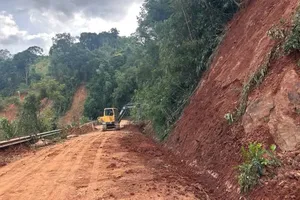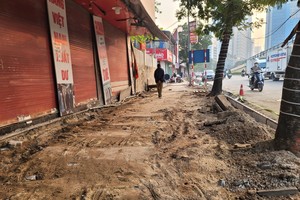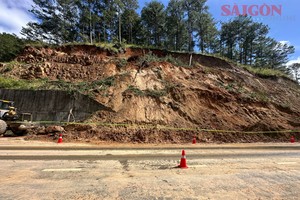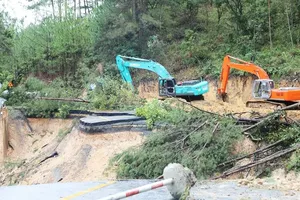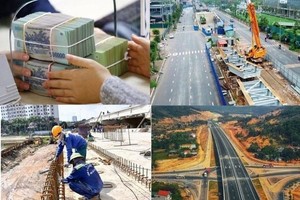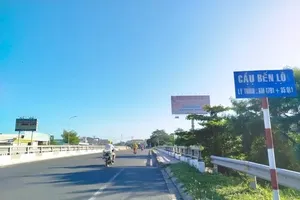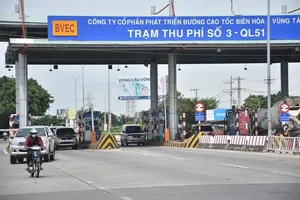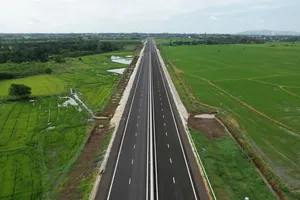
At the bustling Ninh Kieu Wharf in Can Tho City, small boats continue to ferry tourists in groups of three or four. It is not hard to see middle-aged boat owners operating one such boat carefully hand life jackets to passengers. But as the engine roared to life and the boat sped towards the Cai Rang floating market, the owners themselves aren’t wearing one.
Can Tho City has 662 inland waterway wharves. According to Deputy Director Nguyen Dang Khoa of the city’s Department of Construction, larger tour boats carrying over 30 passengers are licensed and must meet strict conditions, including being equipped with lifebuoys, fire extinguishers, and radios, along with operators possessing a certificate. Regarding the smaller, often non-compliant boats, the picture is rather worrying. The Deputy Director stated the department will increase inspections to enforce regulations.
The situation is equally concerning in Phu Quoc Special Zone (Kien Giang Province), home to over 80 high-powered tour canoes. Most of these vessels, however, lack legally designated operating piers.
At the Bach Dang park embankment one late July afternoon, boats were picking up and dropping off tourists, including foreigners, from the unauthorized shoreline. “Some boats don’t even have life jackets”, remarked Mr. Thanh, a local resident. “This has been going on for years, and we rarely see officials intervening.”
This blatant disregard for safety is widespread. At the Cua Lon River ferry in Ca Mau, the nation’s southernmost province, passengers boarding and disembarking almost universally ignore the available life jackets. When asked why, one passenger, Mr. Le Minh Tan, offered a common refrain: “It’s inconvenient. The time spent crossing the river on the ferry is short!”
According to Head Vu Khang Cuong of the Ship and Seafarer Registration Office (Vietnam Maritime Administration), the problem runs deeper than just compliance. “Our country has a large fleet of coastal tourist vessels”, he explained. “However, under current regulations, these boats aren’t required to be equipped with advanced distress signal devices or sophisticated rescue positioning systems.” They rely on basic VHF radios and flares, which are often useless if an emergency happens too quickly or in extreme weather.
Following the Vinh Xanh 58 disaster, Head Vu Khang Cuong insists that regulators must urgently review and mandate more modern emergency equipment on ships, especially those serving tourism purposes.
Explaining why it took nearly two hours for rescue operations to begin for the Vinh Xanh 58, Director Vu Manh Long of the Waterway Port Authority and Inland Waterway Vehicle Registration (Quang Ninh Province Department of Construction) pointed to a critical technological flaw.
Tour boats in Ha Long Bay are tracked via GPS and Zalo groups, but the GPS relies on the mobile network. “In low-lying areas or ‘dead zones’ on the bay”, he said, “the signal is lost, and an emergency signal simply can’t get out.”
When asked about the current warning procedures, Deputy Director Bui Hong Minh of the Quang Ninh Province Department of Construction explained that captains are notified of adverse weather and instructed to seek shelter. “We will review the process to have more specific instructions, so captains aren’t confused when encountering an incident”, he said.

However, for some industry veterans, these incremental changes aren’t nearly enough. Chairman Pham Ha of the luxury yacht operator Lux Group bluntly pointed out the systemic chaos. “When a crisis hits, who is responsible for reporting it? Who is in command of the rescue?” he demanded. “In an emergency, if there’s no consistent coordination, having multiple parties involved without a unified command only delays the golden window for saving lives.”
He argues that the maritime industry, particularly waterway tourism, is decades behind aviation in its application of technology. While airplanes are monitored second-by-second from “air traffic control towers”, many tour boats are still left to “fend for themselves”.
“The technology already exists”, Chairman Ha asserted. “AIS and GPS allow for a centralized operating system, where every boat appears as a ‘green dot’ on a screen. If one turns red, the system could automatically trigger a rescue protocol, deploying high-speed boats, medical teams, and even helicopters within minutes.”
The problem, he insists, isn’t technical capability but a deficit in “management mindset and a delay in application.” He calls for a true “meteorological warning ecosystem” – not just a one-size-fits-all forecast, but a network of alerts customized for every type of vessel, from a wooden fishing boat to a five-star steel-hulled yacht. “This is how you achieve transparent, substantive management”, he concluded, “one that aims to protect human lives and the reputation of our entire marine tourism industry.”
Official safety guidelines at sea
In response to recent events, the Ministry of Agriculture and Environment has issued new safety guidelines for mariners. Accordingly, in a ship sinking situation, underwater survival skills can be applied such as:
- exhaling and diving down, crouching to create momentum then jumping up to take a breath;
- kicking straight, arching the chest, inhaling deeply in rhythm to stay afloat;
- turning over, inhaling deeply with the mouth then exhaling slowly to maintain breathing rhythm and stay calm.
The Department of Dike Management and Disaster Prevention also reminds people about the two most dangerous periods in the East Sea: the storm season (June-November) and the Northeast monsoon (October-March). The core advice remains unchanged: monitor weather forecasts, carry proper equipment, and maintain communication with the mainland.
